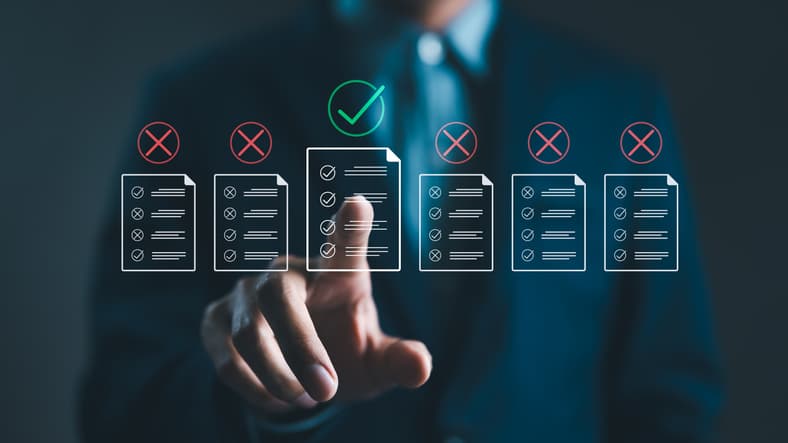
Cybersecurity attacks
- Definition of cybersecurity attacks
In today’s interconnected digital world, cyberattacks have become increasingly prevalent. Cybersecurity attacks refer to deliberate actions taken to compromise the confidentiality, integrity, or availability of computer systems, networks, or data. These attacks can range from relatively simple tactics to highly sophisticated techniques employed by cybercriminals and nation-state actors.
- Importance of cybersecurity
The importance of cybersecurity cannot be overstated. With the proliferation of digital technologies, almost every aspect of our lives, from financial transactions to critical infrastructure, is dependent on secure digital systems. A successful cyberattack can result in financial losses, data breaches, and damage to reputation, and even physical harm in some cases.
- Categories of cybersecurity attacks
Cybersecurity attacks can be broadly categorized into various types, each with its unique characteristics and methods of execution. In this article, we will explore the common types of cybersecurity attacks that individuals, organizations, and governments face regularly.
Common types of attacks
- Malware attacks
Malware, short for malicious software, is a broad category of cybersecurity threats designed to infiltrate and harm computer systems. Some common types of malware include:
- Viruses: These are self-replicating programs that attach themselves to legitimate files and spread when these files are executed.
- Trojans: Trojans disguise themselves as legitimate software but have malicious payloads that can harm the system or steal data.
- Worms: Worms are self-propagating malware that spread independently across networks and devices.
- Ransom ware: Ransom ware encrypts a victim’s data and demands a ransom for decryption.
Phishing attacks
Phishing attacks involve tricking individuals into revealing sensitive information, such as login credentials or financial data. Some variations of phishing attacks include:
- Spear Phishing: This involves targeted attacks on specific individuals or organizations using personalized information. Attackers craft convincing messages to trick recipients into revealing sensitive information.
- Whaling: Whaling is a form of spear phishing that targets high-profile individuals within an organization, such as executives or decision-makers.
- Vishing: Vishing is a phishing attack conducted via voice calls, where attackers impersonate legitimate entities to gather sensitive information.
Denial of service (DoS) attacks
DoS attacks aim to overwhelm a target system or network, making it inaccessible to users. Common DoS attacks include:
- SYN flood: SYN flood attacks flood a server with SYN requests, overwhelming its resources and rendering it unable to respond to legitimate requests.
- UDP flood: UDP flood attacks overload the target with a high volume of User Datagram Protocol packets, causing network congestion and service disruption.
- Smurf attack: Smurf attacks amplify their impact by spoofing the source IP address, making it appear as if the attack traffic is coming from multiple sources.
Man-in-the-middle (MitM) attacks
MitM attacks involve intercepting and altering communication between two parties without their knowledge. Some MitM techniques include:
- ARP spoofing: ARP spoofing involves manipulating the Address Resolution Protocol to redirect network traffic through the attacker’s system, allowing interception and alteration of data.
- DNS spoofing: In DNS spoofing, attackers redirect DNS requests to malicious servers, leading users to unintended destinations.
- SSL stripping: SSL stripping forces the use of unencrypted HTTP instead of secure HTTPS, making it easier for attackers to intercept and manipulate sensitive data.
SQL injection attacks
SQL injection attacks target vulnerable web applications by inserting malicious SQL queries into input fields. Successful attacks can lead to unauthorized access to databases, data leakage, or data manipulation.
- Cross-site scripting (XSS) attacks
XSS attacks inject malicious scripts into web pages viewed by other users. These scripts can steal user data or session cookies, potentially compromising user accounts.
- Zero-day exploits
Zero-day exploits target vulnerabilities in software or hardware that are unknown to the vendor or unpatched. Attackers use these vulnerabilities to gain unauthorized access or control.
- Insider threats
Insider threats originate from individuals within an organization and can be categorized into:
- Malicious insiders: Intentionally harming the organization.
- Negligent insiders: Accidentally causing harm due to carelessness.
Social engineering attacks
Social engineering attacks manipulate human psychology to gain access or information. Some techniques include:
- Pretexting: Creating a fabricated scenario to obtain sensitive information.
- Baiting: Offering something enticing to lure victims into a trap.
- Tailgating: Gaining unauthorized physical access by following an authorized person.
IoT-based attacks
Attacks on IoT devices target vulnerabilities in connected devices. Examples include the Mirai Botnet, which exploited insecure IoT devices to launch large-scale DDoS attacks, and BrickerBot, which aimed to permanently damage IoT devices.
- Advanced persistent threats (APTs)
- Definition of APTs
Advanced Persistent Threats (APTs) refer to a category of cyberattacks that are typically long-term, well-organized, and highly targeted. These attacks are conducted by skilled and persistent threat actors, often with significant resources and motivation. The term “persistent” indicates that APTs aim to maintain unauthorized access to a target network or system over an extended period, often remaining undetected.
- Characteristics of APTs
- Persistence: APTs are known for their persistence. Once infiltrated, threat actors work diligently to remain within the target’s environment for an extended duration, often bypassing security measures and adapting to defensive countermeasures.
- Advanced tactics: APTs employ advanced and sophisticated tactics to breach systems, evade detection, and achieve their objectives. This may involve leveraging zero-day vulnerabilities, custom malware, and targeted social engineering.
- Covert access: A key objective of APTs is to maintain covert and ongoing access to the target’s network or systems. Unlike typical cyberattacks that seek immediate exploitation, APTs focus on long-term presence, enabling them to gather intelligence, steal data, or carry out other activities over time.
- Notable APT groups
Several APT groups are well-known for their cyber espionage and advanced attack capabilities. Some notable examples include:
- APT28 (Fancy bear): Linked to the Russian government, this group has been involved in various cyberattacks, including election interference and targeting government organizations.
- APT29 (Cozy bear): Another Russian-affiliated group known for cyber espionage activities, including breaches of high-profile organizations and government entities.
- APT32 (OceanBuffalo): A Vietnamese APT group involved in cyber espionage and data theft, often targeting organizations in Southeast Asia.
APT attack techniques
APTs employ a range of sophisticated techniques to achieve their objectives, including:
- Spear phishing: APTs often launch highly targeted phishing attacks, customized to fool specific individuals within the target organization.
- Zero-day exploits: APTs frequently use previously unknown vulnerabilities (zero-days) to gain initial access to systems or networks.
- Custom malware: APTs develop custom-designed malware tailored to their specific targets, making it harder to detect by standard security solutions.
- Lateral movement: Once inside a network, APTs move laterally, exploring and compromising other systems to broaden their access and reach.
- Insider threats
Insider threat overview
Insider threats are especially concerning because they originate from within an organization. These threats can be exceptionally damaging as they involve individuals who have access and knowledge of the organization’s systems and data.
- Types of insider
Insider threats can take various forms:
- Malicious insiders: These individuals intentionally harm the organization, often for personal gain or revenge.
- Negligent insiders: They inadvertently cause harm due to carelessness or lack of awareness, potentially exposing sensitive data.
- Compromised insiders: Insiders whose accounts or credentials have been compromised by external threat actors and are unknowingly involved in cyberattacks.
- Motivations behind insider threats
Understanding motivations is essential for mitigation:
- Financial gain: Malicious insiders may seek financial benefits through data theft or selling company secrets.
- Revenge: Disgruntled employees may engage in insider threats as retaliation.
- Competitor loyalty: Some insiders may engage in espionage for rival companies.
- Carelessness: Negligent insiders may not grasp the importance of security practices, leading to accidental breaches.
- Insider threat mitigation strategies
To mitigate insider threats:
- Access control: Limit access to sensitive data and systems based on job roles and enforce strict access controls.
- Employee training: Regular cybersecurity training educates employees about risks and teaches them to recognize and report suspicious activities.
- Monitoring: Continuously monitor network and user activities for unusual behavior.
- Behavioral analytics: Use analytics to identify deviations from normal employee behavior.
- Incident response plans: Develop and practice plans for swift response to insider threats.
- Emerging threats
AI and machine learning-powered attacks
Threat actors are using AI and machine learning to create more sophisticated and automated cyberattacks. These technologies can help attackers bypass traditional security measures, analyze large datasets for vulnerabilities, and generate convincing phishing emails.
- Quantum computing threats
The advent of quantum computing brings new challenges for encryption and security. Quantum computers have the potential to break currently used encryption algorithms, requiring the development of quantum-resistant encryption methods to protect sensitive data.
- 5g-related security concerns
The rollout of 5G networks introduces security considerations due to the increased attack surface and potential vulnerabilities in the new infrastructure. Ensuring the security of 5G networks is essential to prevent cyberattacks and data breaches.
- Supply chain attacks
Attackers are increasingly targeting the supply chain to compromise the security of products and services. These attacks can include tampering with hardware or software during production or distribution, posing significant risks to organizations and consumers.
- Cloud security risks
As businesses migrate to the cloud, securing cloud environments becomes critical. Misconfigured cloud settings, weak access controls, and inadequate monitoring can lead to data breaches and unauthorized access to sensitive information.
- Blockchain vulnerabilities
Despite its reputation for security, even blockchain technology is not immune to vulnerabilities. New threats and attack vectors continue to emerge, such as 51% attacks on blockchain networks or vulnerabilities in smart contracts.
Cybersecurity defense strategies
- Antivirus software
Antivirus software helps detect and remove malware from systems. It scans files and programs for known patterns of malicious code and takes action to quarantine or remove threats.
- Firewalls
Firewalls act as a barrier between a network and potential threats. They filter incoming and outgoing network traffic, enforcing security policies to block unauthorized access and protect against cyberattacks.
- Intrusion detection systems (IDS) and Intrusion prevention systems (IPS)
IDS and IPS monitor network traffic for suspicious activity. IDS identifies potential threats, while IPS can take active measures to block or mitigate threats in real-time.
- Multi-factor authentication (MFA)
MFA adds an extra layer of security by requiring users to provide multiple forms of verification before granting access. This reduces the risk of unauthorized access, even if passwords are compromised.
- Security awareness training
Educating employees about cybersecurity best practices is crucial. Security awareness training helps individuals recognize phishing attempts, follow secure password practices, and avoid risky behavior that could lead to security breaches.
- Regular software updates and patch management
Keeping software and systems up to date is vital for addressing vulnerabilities. Regular updates and patch management ensure that known security flaws are fixed, reducing the risk of exploitation by cybercriminals.
- Incident response plans
Having a well-defined incident response plan ensures a swift and organized response to cyber incidents. It outlines the steps to take when a breach occurs, helping minimize damage and recovery time.
- Network segmentation
Network segmentation involves isolating different parts of a network from each other. This practice limits lateral movement for attackers and isolates sensitive data, reducing the potential impact of breaches.
In conclusion, the ever-evolving landscape of cybersecurity presents a formidable challenge in the digital age, with a myriad of attack vectors constantly threatening the security and integrity of our data and systems. From the stealthy infiltration of malware through phishing emails to the brute force of DDoS attacks, the types of cyber threats are diverse and ever-growing. It is imperative for organizations and individuals alike to remain vigilant, continuously educate themselves on emerging threats, and invest in robust cybersecurity measures to protect against these attacks.


